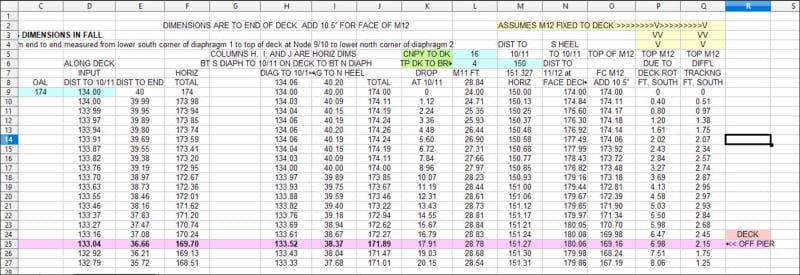Speculation:
The blister is probably another instance of good concrete and a lousy construction joint.
The blister looks as if it parted company with the canopy and is probably not in the original position relative to the canopy.
We can't discount the action of the PT bars in member 10 that may have pushed the blister to the north.
For discussion rather than argument, the canopy may have broken in two places.
I am wondering about the length relative to the height of the pier.
Intuitively, the weakest spot and the spot with the most bending would be under the blister where the PT rods from members 10 and 11 cross.
This is also a corner of the triangle.
Breaking of the canopy away from the 10/11 joint would destroy the geometry of the triangle.
It is hard to imagine that the obvious break in the canopy is the original break, given that the canopy to member 12 joint is intact.
Please consider this sequence as a possibility.
1. The bridge starts to fall as we have discussed and the canopy hinges at the 10/11 node. That would tend to lift the blister off of the canopy, intact.
2. As the bridge falls, the lower ends of members 11 and 12 are destroyed.
3. When the broken end of the canopy hits the ground, the canopy breaks again, and also breaks member 11.
Looking at the last picture posted; The first break would be the south side of the section of canopy labeled 'CANOPY" and the second break would be the north end of the section labeled "CANOPY".
Part of member 11 would be broken and beneath the broken canopy.
Consider the length of the PT bar compared to the intact length of member 11.
That argues strongly for a section of member 11 to be broken and lying beneath the rubble of the canopy.
I find it difficult to accept the damage to the lower end of member 11 to crushing damage. This is a triangle and crushing of member 11 would change the geometry and change the angle of the canopy to member 12 joint.
Bill
--------------------
"Why not the best?"
Jimmy Carter

